Return of Empire Strikes Back's lost short Black Angel
- Published

A scene from Black Angel shot at Loch Eck in Argyll
Black Angel, a short film shown in the cinemas before the 1980 Star Wars feature The Empire Strikes Back, disappeared for decades and was believed to have been lost before it re-emerged in 2012.
Shot in spectacular locations, directed by an Oscar-winner and shown before screenings of Star Wars: Episode V - The Empire Strikes Back, Black Angel had it all. Then the film was lost.
Black Angel is an Arthurian tale of a knight who rescues a princess while he is returning home from the Crusades.
Shot in Scotland on a shoestring budget in 1979, it was shown the following year in cinemas in the UK, Scandinavia, Japan and Australia as part of screenings of The Empire Strikes Back.
Black Angel's director, Londoner Roger Christian, had won an Academy Award for his set decoration on the first Star Wars film to be made, Episode IV - A New Hope.
Christian's friend, Star Wars' creator and director George Lucas, had given him free rein to make Black Angel as the short to accompany Empire.
In the US shorts were no longer shown ahead of feature films but the tradition still continued in Europe and elsewhere.
Christian had written a script for Black Angel after going back to film school following his work on A New Hope.
Given the green light to make it into a film, he went north to the Highlands and Argyll with a crew of 11.
They brought with them Cinemascope lens cameras, used for shooting wide-screen films, and a couple of leftover rolls of film from Empire.
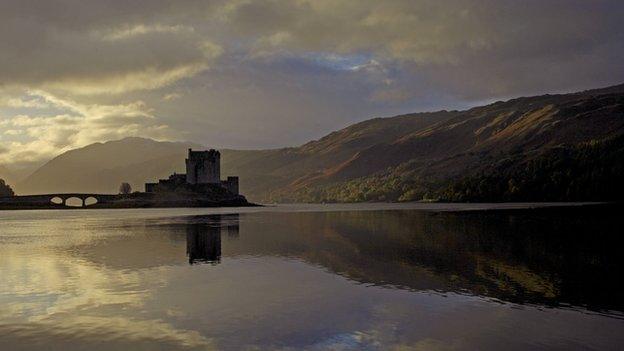
Eilean Donan Castle in the Highlands was one of the locations for Black Angel
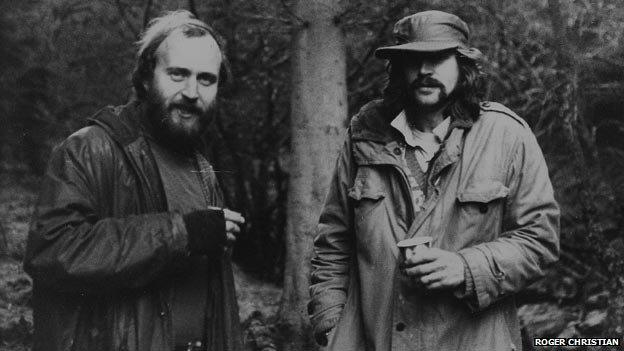
Roger Christian, right, with cinematographer Roger Pratt while shooting Black Angel
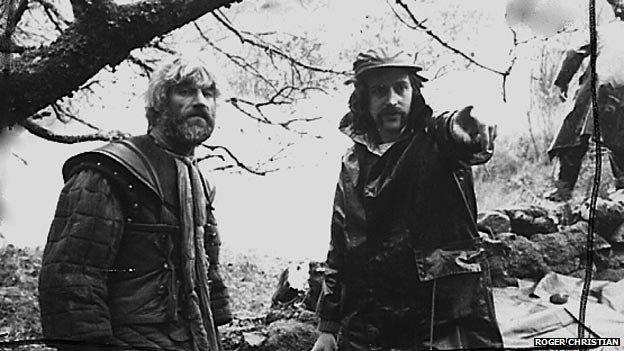
Black Angel was shot in locations in the Highlands and Argyll
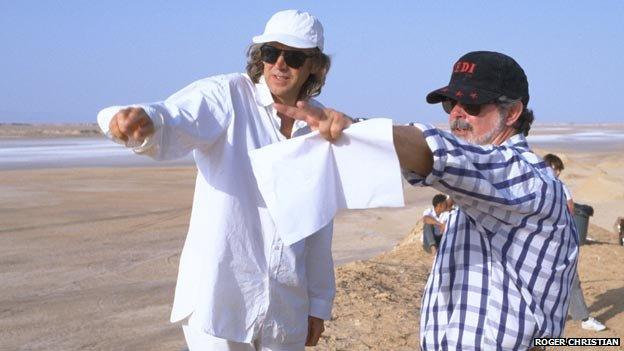
Roger Christian, left, with George Lucas while filming The Phantom Menace in Tunisia
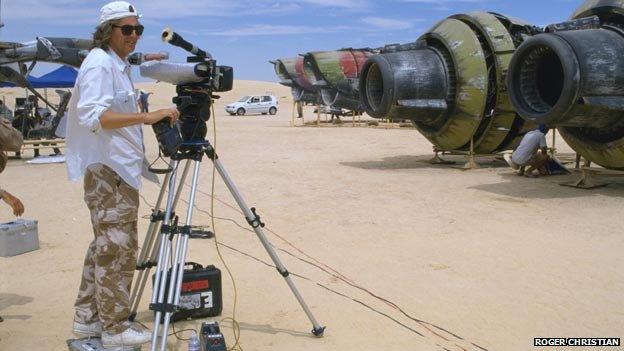
Roger Christian surveys pod racers during filming of The Phantom Menace
Backed with a £25,000 grant from the UK government, the crew headed into the hills in a Volkswagen campervan, a horse trailer and a small van.
"I already had an idea for locations in Scotland," said Christian.
"With just the vans and a horse trailer we were able to get right into these beautiful locations.
"For me Eilean Donan Castle is the ultimate romantic castle, while the landscape of Kyle of Lochalsh is spectacular.
"We went in September and October because the light in Scotland then is fantastic. But in the back of my mind I knew that at any time winter could come and end the filming."
Surreal backdrop
While in the Highlands, the crew got wind of a school that was being closed down in Dunoon. It had a swimming pool and Christian saw an opportunity to use it for an underwater scene.
He said: "We managed to get the draining of the pool delayed by a week."
And while in Argyll, they also came across locations on and around Loch Eck where tall Scots pines with twisting, exposed roots offered a surreal backdrop for other scenes.
With everything shot and the crew preparing to return home, it started snowing.
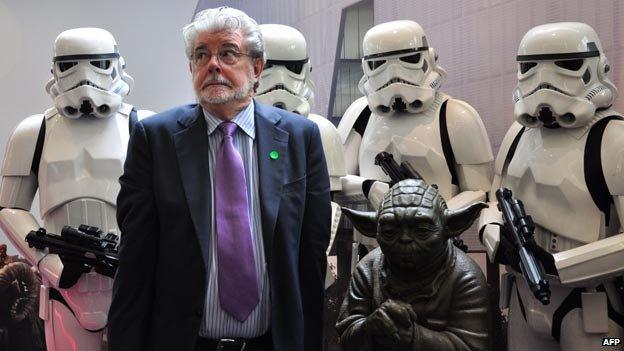
Christian said Lucas has created a mythology around Star Wars
Christian's nerves were fraught when it finally came to showing the finished 25-minute film to Lucas, Empire's director Irvin Kershner and 20th Century Fox executives.
Black Angel's cinematographer Roger Pratt was so worried about how they would react, he ran off to be sick. But the pair had nothing to fear as the film went down a storm among those watching it.
Christian said: "Kershner said to me that it was okay for me to come out from under the table."
'Big break'
After Empire had completed its run in cinemas worldwide, the original film prints of Black Angel were lost.
Unsuccessful efforts were made to track down the prints at Lucas's Skywalker Ranch.
Christian said: "I had my own copy, but it was a degraded copy. I preferred Black Angel became a myth rather than show a poor quality version of it."
While Black Angel was lost, it was not forgotten. Christian was frequently asked by fans at science-fiction conventions and also friends such as Peter Briggs, who wrote the script for 2004's Hellboy, to re-release it.
Christian had almost given up on the original prints when he received a call in 2012 from a Universal Studio's archivist who told him he had found them.
They had ended up in the US following the collapse of UK studio Rank which, it turned out, had stored the prints along with other film negatives in World War II bunkers.
Californian visual effects company, Athena Studios, painstakingly restored the Black Angel prints frame by frame. The firm's bosses then convinced Christian to let them show it at last year's San Francisco's Mill Valley Film Festival.
It was the first time Black Angel had been shown to the public in the US. In the audience watching it was Guy Veale, a fan from Scotland.
Christian said: "Guy was five years old and living on Shetland when his dad took him to the cinema to see The Empire Strikes Back.
"He saw Black Angel but was never quite sure if what he saw was a film, or something he had imagined. He got some funds together and went to the Mill Valley Film Festival to confirm what he had seen."
Through efforts by Mr Veale, who saw Empire at the North Star cinema in Lerwick, Black Angel is set for a homecoming when it is shown at the Glasgow Film Festival, external later this month ahead of screenings at Dundee DCA, Inverness's Eden Court and Edinburgh Filmhouse.
Toronto-based Christian is excited about the looming tour and returning to Scotland.
He is also looking forward to next year's release of the new Star Wars film, with a script written by Lawrence Kasdan and JJ Abrams.
Christian is part of the "Star Wars family" - writers, directors, cinematographers and crew who have been involved in and have continued to support Lucas and the franchise.
He worked on Return of the Jedi and The Phantom Menace after the first movie gave him what he calls his "big break" in cinema.
Christian has fond memories of A New Hope. Its low budget required the crew to innovate when it came to making props and the set.
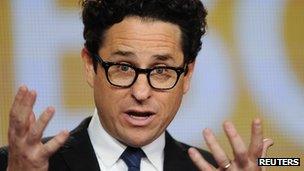
JJ Abrams will direct the latest episode in the Star Wars franchise
As well as making lightsabers from bits and bobs, he used scrap metal from aircraft in the set designs.
"I invented the use of airplane scrap in films," he said.
"Scrap back then could be bought by weight and airplane parts are light, so truck loads of scrap metal and jet engines could be bought," said Christian.
"When the prop master and other members of the crew - these people were giants having previously worked with David Lean - thought I was mad bringing in these truck loads of scrap planes.
"The prop master told me: 'You know you're mad boy'. But I knew it was going to work."
Looking ahead to next year's release of the new Star Wars, Christian said there was a determination to return to the feel and look of the original movies. Scenes are being shot in the UK again and on film, and not digital cameras.
Christian said: "George Lucas's genius was that he made a space film that people got, it was gritty and dirty, and also this fantastic mythology he created around the films.
"I hope with the new film they don't just go for the ride and forget the mythology."
- Published28 November 2013
- Published19 April 2013
- Published20 March 2013